Those in the market for an OLED monitor face a massive range of expensive displays, and they tend to sacrifice essential features to offset the cost of using a pricier panel. For this reason, finding an affordable OLED monitor that caters to gamers and content creators can be challenging. However, the Tempest GZ2711 from Cooler Master may solve this problem, offering excellent colour accuracy, visual fidelity, and solid response times for smooth gameplay. We’ve tested the Tempest GZ2711 in a series of GeekaWhat benchmarks to see how it fares compared to other OLED monitors on the market.
The Tempest GZ2711 entered the market alongside a range of other Tempest-branded displays from Cooler Master, all of which cater to different use cases and budgets with varying panel types, refresh rates, response times, and more. We were particularly impressed with the Tempest GP2711, as one of the more premium displays on the market, so we’re curious to see how the GZ2711 holds up compared to the vast range of other OLED displays we’ve reviewed.
Buy the Cooler Master Tempest GZ2711 on:
Specification
The Cooler Master Tempest GZ2711 is a 27-inch monitor with a 2560 x 1440 (1440p) resolution. Specs-wise, the Tempest GZ2711 and GP2711 are pretty similar, but the most significant difference is the type of panel they both use. The GZ2711 has a vibrant OLED panel, compared to the GP2711, which utilises a VA panel with quantum dots. OLED is generally much more robust than VA regarding visual fidelity, as the organic light is incredibly bright and can display richer whites and deeper blacks, resulting in very lifelike imagery.
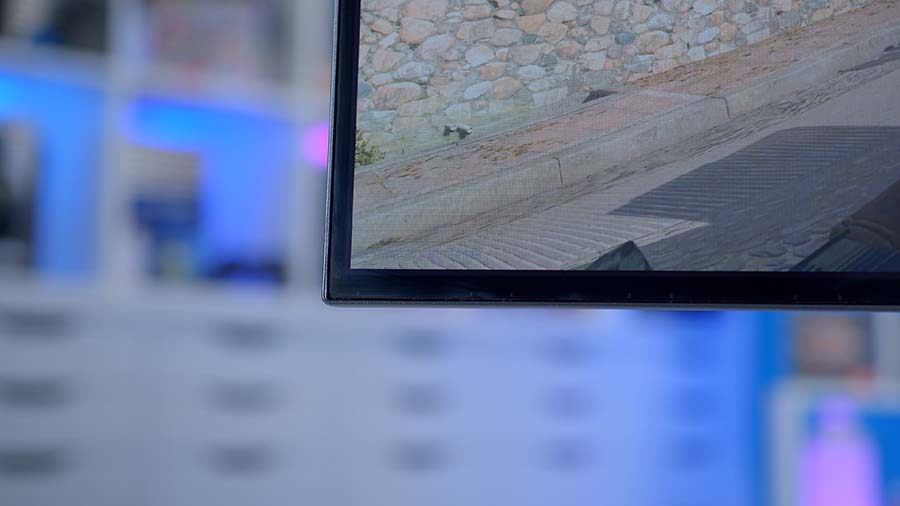
The Tempest GZ2711 offers great viewing angles, a 240Hz refresh rate, and a 0.03ms response time through the MPRT measurement. Although a grey-to-grey measurement would be preferable, it makes sense that Cooler Master has used MPRT to assess the response time, as this provides a better assessment with colour-accurate displays. This monitor also uses FreeSync Premium as its VRR technology, ensuring rapid imagery changes remain smooth and precise.
| Key Specs | Cooler Master Tempest GZ2711 |
|---|---|
| Screen Size | 27″ |
| Max Resolution | 2560 x 1440 |
| Refresh Rate | 240Hz |
| Response Time | 0.03ms (MPRT) |
| Colour Gamut | 100% sRGB 98.5% DCI-P3 95% Adobe RGB |
| Peak Brightness | 450 nits |
| Contrast Ratio | 1,500,000:1 |
| Panel Type | OLED |
| Display Inputs | 2 x HDMI 2.1 2 x Displayport 1.4 |
| Additional IO | 1 x USB 3.0 Type-B 2 x USB 3.0 Type-A 1 x Microphone/Headphone Jack |
| VRR Technology | AMD FreeSync |
The Tempest GZ7211 offers a peak brightness of 450 nits, considerably lower than the 1500 nits on the GP2711 monitor. This is because the pixels have incredibly strong contrast and provide good vibrancy, so high brightness isn’t needed. OLEDs thrive in low-light settings, which is particularly useful for colour-accurate work where you might use a shroud to help remove any external colour.
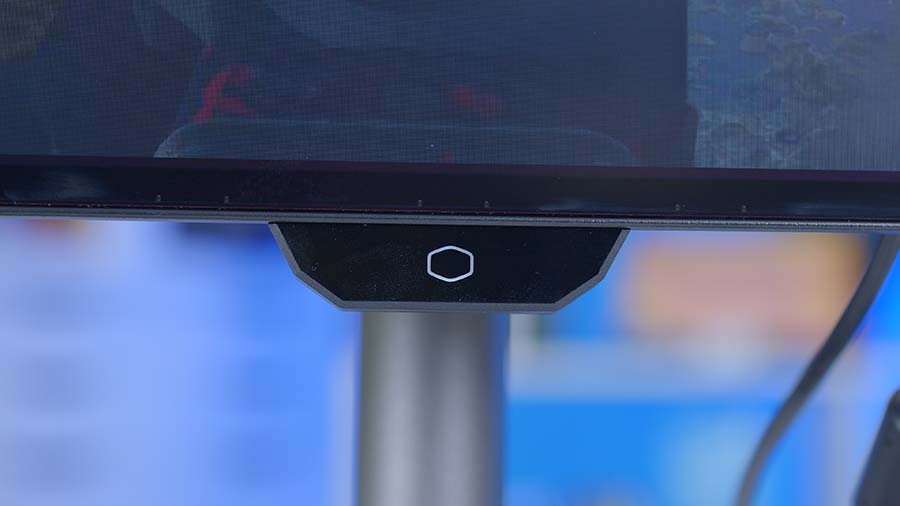
Looking at the IO, the Tempest GZ2711 comes with four display outputs, two of which are Displayport 1.4 and the other two are HDMI 2.1. It’s worth noting that the 240Hz refresh rate is only accessible when Displayport is being used, as HDMI 2.1 is more restricted on bandwidth, which means you’re limited to 144Hz at the maximum. For the rest of the IO, the Tempest GZ2711 features a small suite of USB ports comprised of two USB 3.0 Type-A ports and a single USB 3.0 Type-B port, which needs to be plugged into a PC. Furthermore, the GZ2711 has a USB Type-C port that delivers up to 96W power to charge devices or peripherals.
Suggested Article: Cooler Master Tempest GP2711 Gaming Monitor Review
Cooler Master Tempest GZ2711 Design
The Tempest GZ2711 monitor significantly alters the design compared to the GP2711. The most noticeable change is the flat screen panel, which has a skinny frame. Both the back and front of the monitor panel are flat, providing a pleasing aesthetic, contrasting with the more bulky plastic style of the GP2711 monitor. I prefer this approach as it looks much more modern and blends nicely with the screen instead of aggressively jutting out like other monitors we’ve looked at.
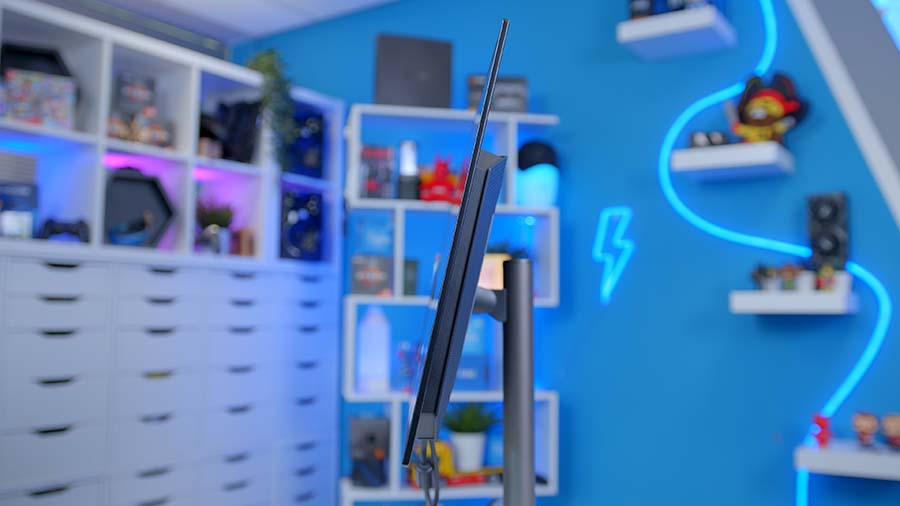
While I like the look of the chassis, the size of the bezels is disappointing. The bottom bezel is about 1cm thick, while the left and right bezels are about 30mm wide. It seems counterintuitive to me to create a monitor with a flat and flush frame with large bezels. I imagine Cooler Master has done this to make the GZ2711 more affordable, but regardless, I don’t like how much the bars take away from the screen.
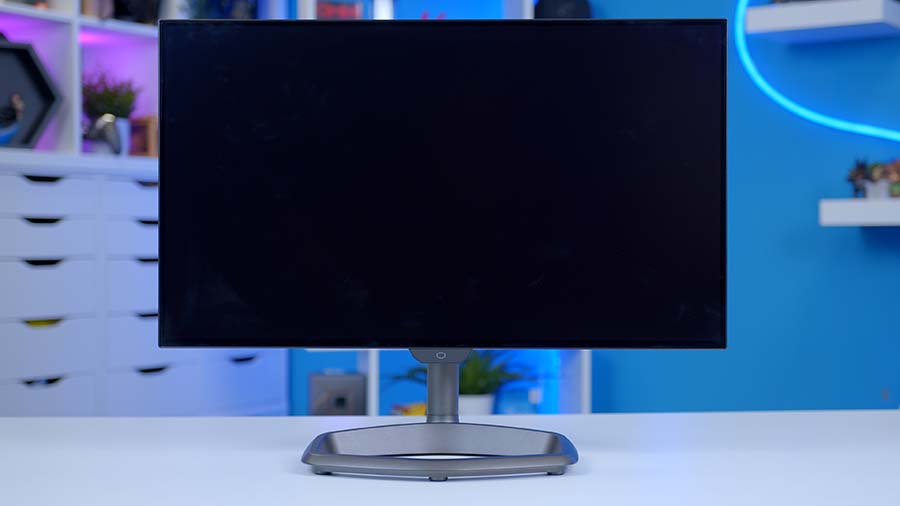
Moving around to the back of the display, the frame’s rear is also flat, apart from the centre of the monitor, which is somewhat raised to house all of the internal circuitry.
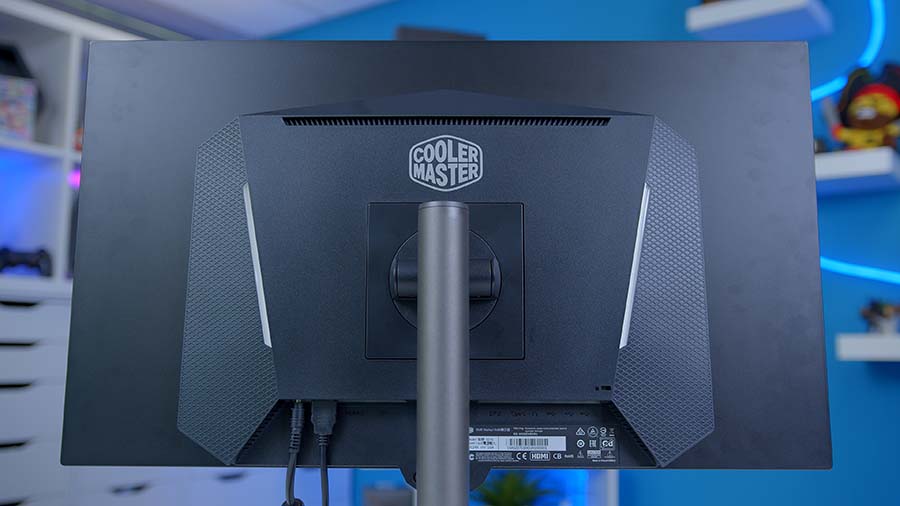
The rear of the Tempest GZ2711 looks relatively plain, apart from the vertical LED strips that span the height of the display. The colours of these RGB strips can be customised through the OSD (on-screen display), which is a neat feature for those who enjoy additional lighting effects.
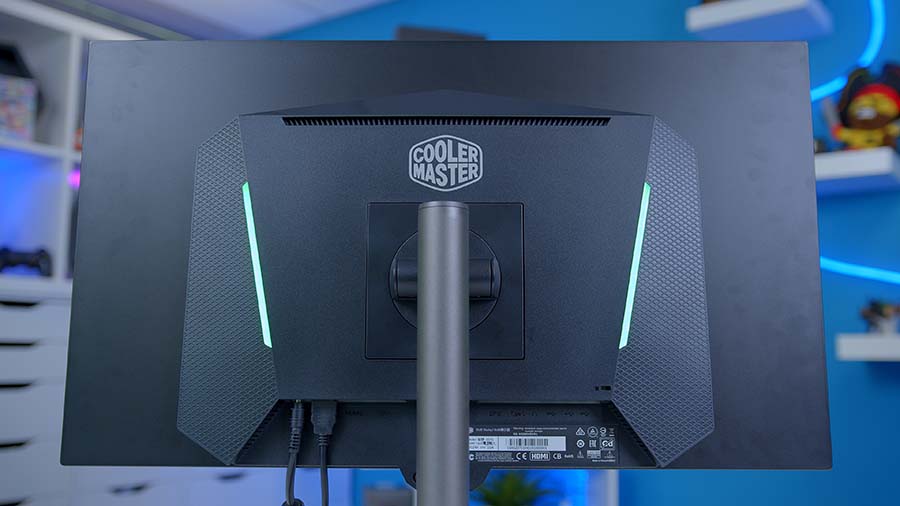
The Tempest GZ2711 monitor features a 100 x 100mm VESA mount for those who prefer a wall or arm mount. However, this monitor comes with a stand for those who don’t have any additional mounting accessories. The stand has two parts: the grey hexagonal base with rubber feet on the bottom to minimise wobbling and the support pillar, which attaches to the monitor by simply clicking in place.
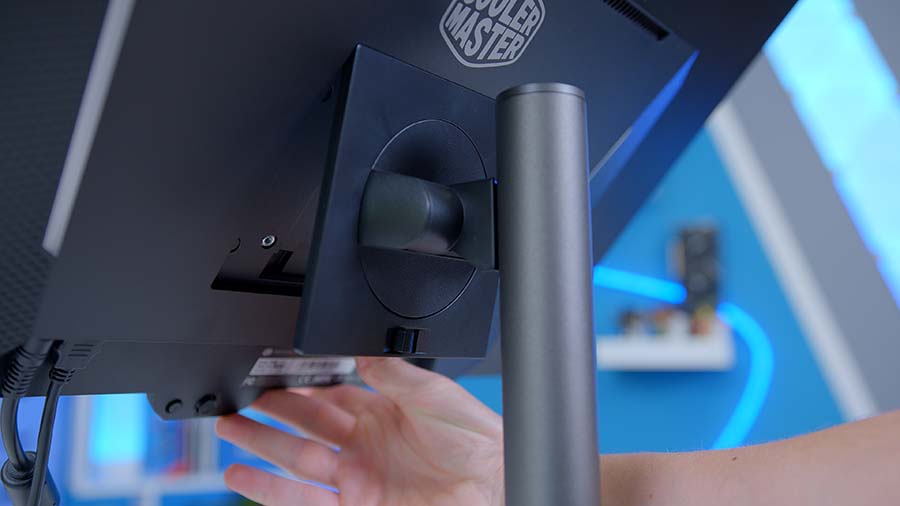
The Tempest GZ2711 stand feels robust and sturdy and blends well with the monitor’s grey plastic. I like that this monitor also has rubber feet, which stop the panel from moving or shifting during usage. Cooler Master also provides a cable clip that attaches to the support pillar of the stand, which can be used to fix and hide any cables.
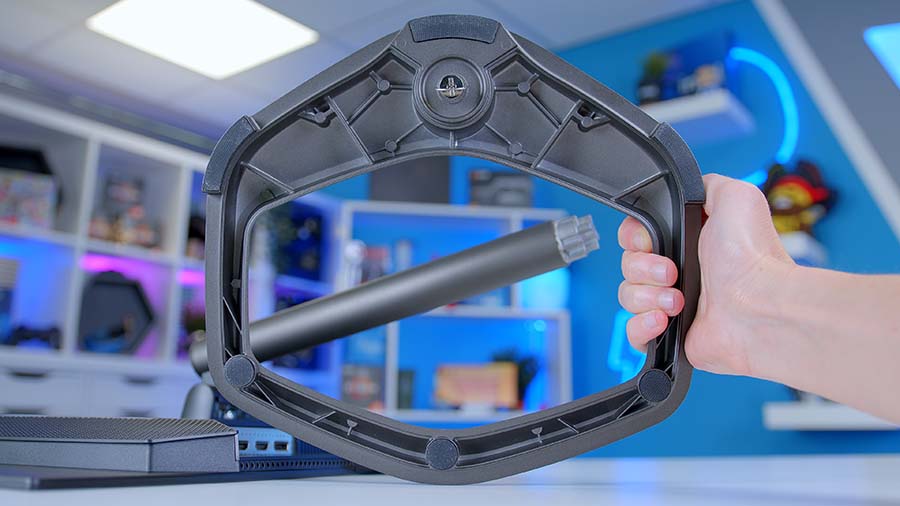
Much like the GP2711, the Tempest GZ2711 is very versatile regarding adjustability. This monitor has 15 degrees of upward tilt and a full 90 degrees of pivot, allowing you to display it vertically. It also has 15 degrees of swivel and 110mm of height adjustment.
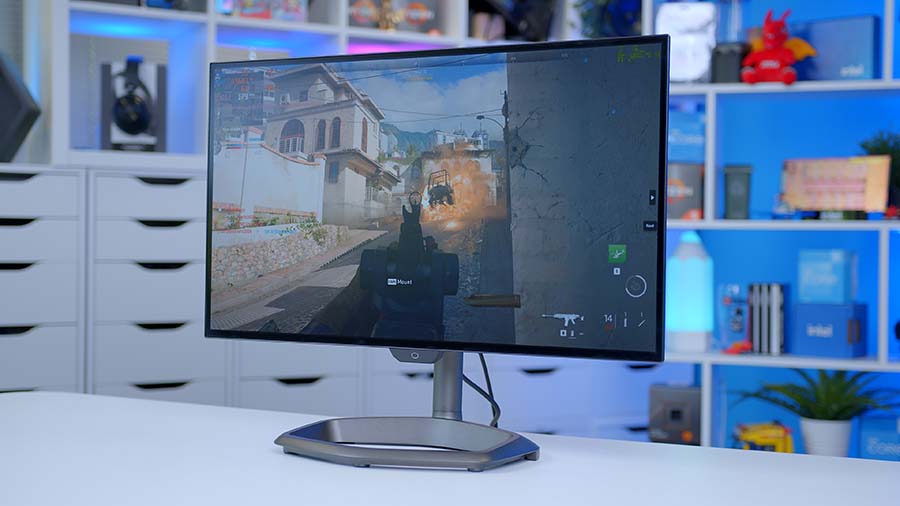
The OSD joystick and power button are tucked away behind the small notch at the front of the panel with the Cooler Master logo. I feel these are in a much better place than the GP2711 monitor, making the OSD much more accessible to change any settings.
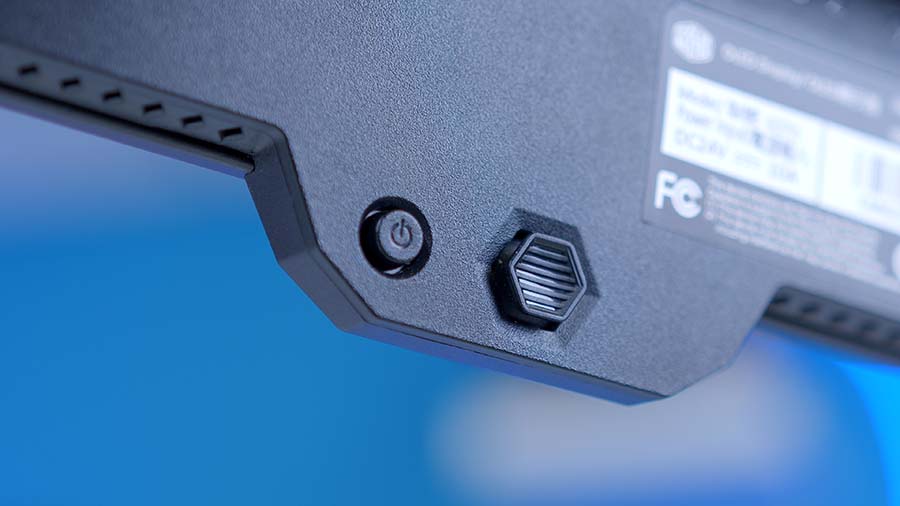
Features We Like
Incredibly Vibrant
The bright, vibrant OLED panel provides sharp imagery, deep blacks, and crisp whites. Despite having a lower brightness rating than other monitors we’ve tested, the Tempest GZ2711 doesn’t feel dim or dark. I was genuinely impressed with how crisp gameplay and high-resolution content look on this display. After calibrating this monitor, visual fidelity only improved.
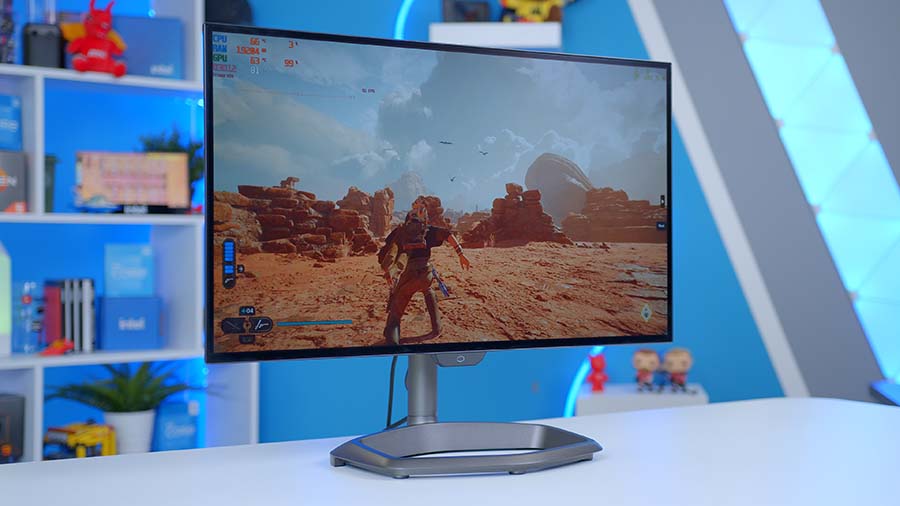
Additionally, viewing angles are pretty universal. There isn’t a sweet spot for visual quality, as the OLED panel provides uniform quality regardless of where you’re sitting. For a 1440p display, the Tempest GZ2711 is a must-have if you’re prioritising image quality.
Plenty of Customisation
While I’m not a massive fan of the OSD navigation, the Tempest GZ2711 has a range of customisable settings, allowing you to create a bespoke visual experience. With several ways to adjust picture settings such as brightness, contrast, sharpness and HDR, it is very straightforward to customise image quality.
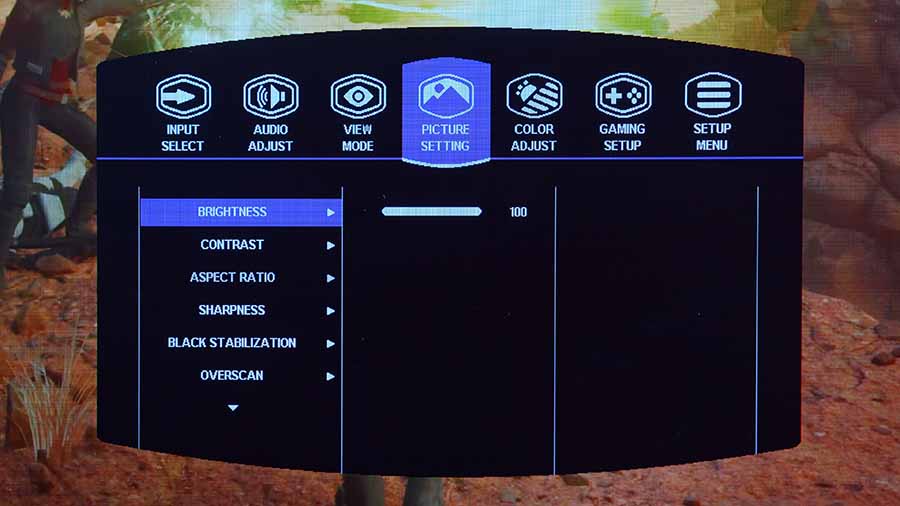
The Tempest GZ2711 offers presets to change image quality and brightness depending on the activity, such as playing games or watching movies. Alternatively, the OSD also has gaming settings, such as adding a crosshair or timer. Furthermore, FreeSync Premium and the built-in KVM are also enabled through the OSD.
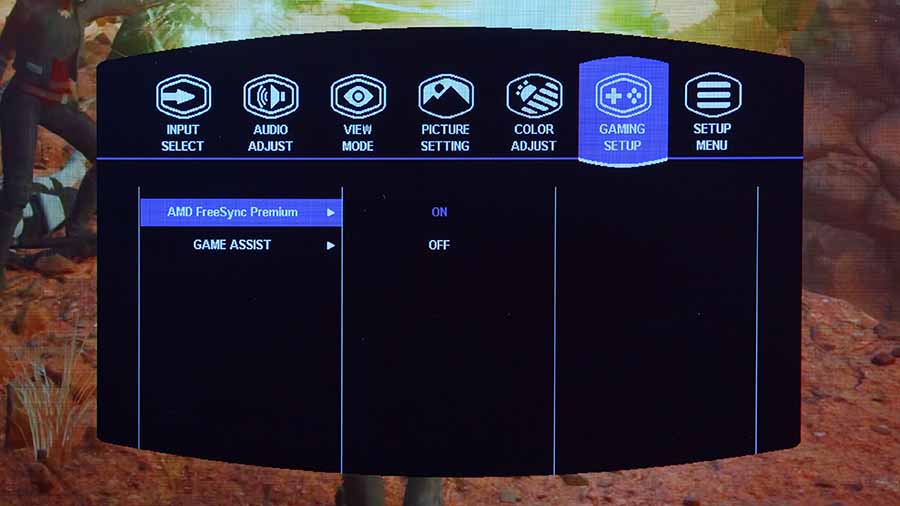
Colour Adjustment Options
I was surprised to see the number of colour adjustment settings in the Tempest GZ2711’s OSD. While other displays, such as ProArt monitors, come with extensive colour accuracy customisation, it isn’t particularly common for gaming displays to offer this. This is why the Tempest GZ2711 stands out compared to other monitors on the market, as it caters well to multifaceted setups.
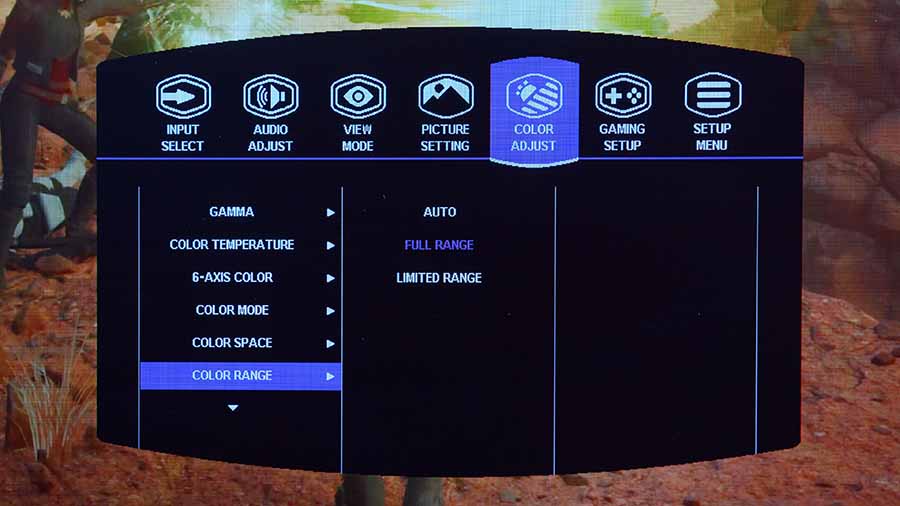
In the OSD, you’ll find gamma settings, colour temperature, six-axis colour, space, range, and a blue-light filter. The most notable colour adjustment setting is the fact that the colour mode can be changed, which changes the gamut that the monitor is using. The monitor is set to native by default, but the GZ2711 offers sRGB, Adobe RGB, Rec. 709, and DCI-P3, which is ideal for HDR and content creation.
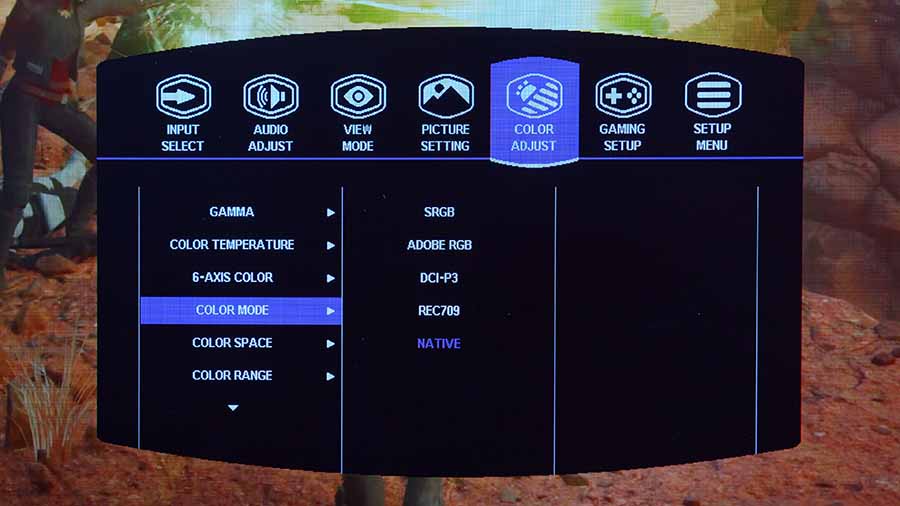
Features We Don’t Like
Cannot Disable Auto Brightness Limiter
One of this monitor’s most frustrating features is that there is no way to turn off the auto brightness limiter. This limiter works by increasing or decreasing the brightness based on what’s shown on the screen. It’s common for other OLED monitors to turn off this feature to get a consistent brightness level at the expense of maximum brightness, which may drop to 200 or 300 nits. However, this isn’t a feature that can be turned off on the Tempest GZ2711.

This is a shame because the brightness adjustment is very noticeable. Even when writing this article, I constantly had to switch what was on the window so that the brightness wouldn’t dim, which made testing this display somewhat painful.
Unintuitive OSD Layout
While the OSD offers plenty of customisation, the overall layout and design aren’t intuitive or easy to navigate. Because the OSD joystick is quite stubby, moving it around to configure settings isn’t the easiest.
Strangely, when in the wider menu, changing any settings requires you to move the joystick down instead of pressing it in. This confused me initially because pressing the joystick closes the menu, but with other monitors, this is usually how settings are selected.

Furthermore, the OSD isn’t big enough to display all the individual settings. The OSD could be bigger to incorporate everything on one page instead of forcing you to scroll awkwardly. It’s also relatively easy to miss the small arrow indicating another page, which I feel is a disappointing oversight.
Colour Accuracy & Image Quality
The Cooler Master Tempest GZ2711 has been through a range of tests spanning multiple days to assess image quality and colour accuracy. One of the primary ways we do this is by calibrating the display using the Spyder X Pro application. This software runs a full-scale calibration, which makes the monitor more colour-accurate while also assessing where the GZ2711 falls within certain colour gamuts.
The Tempest GZ2711 display is aimed at content creators and provides solid speeds and response times, making it great for gaming. To see if Cooler Master’s claims are accurate, we ran the colour calibration benchmark with our Datacolor Spyder X Pro. From our results, the advertised colour ratings seem to be mostly correct.
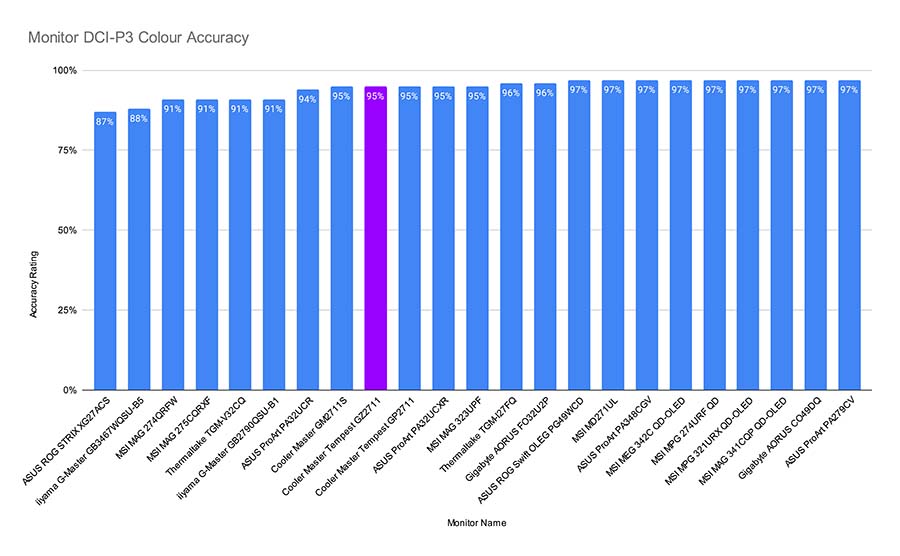
Following our benchmark, the colour calibrator showed that the Tempest GZ2711 covers 100% of the sRGB space, which is hardly surprising considering this is an OLED monitor.
For DCI-P3, the Tempest GZ2711 offered 95% coverage compared to the 98.5% rating on Cooler Master’s website. Admittedly, while there is a 3.5% difference in our results versus Cooler Master’s claims, 95% is still excellent for a gaming monitor. Our results are within less than a 5% margin of what Cooler Master advertises, which is great to see.
Conclusion
Cooler Master Tempest GZ2711
Product Name: Tempest GZ2711
Brand: Cooler Master
-
Features
-
Design
-
Performance
-
Value For Money
Summary
The Tempest GZ2711 is one of Cooler Master’s strongest monitors to date. It offers an OLED panel with exceptional colour accuracy, a great refresh rate, and a blazing-fast response time, making it ideal for professional content creation and gaming. Pricing will differ depending on the region. In the UK, the Tempest GZ2711 costs around £600, making it one of the most affordable OLED displays on the market. In the US, however, the $899.99 MSRP is very steep, considering this monitor is only 1440p. Pricing aside, the Tempest GZ2711 has a solid set of features that makes it great for productivity, especially for those looking to create a bespoke visual experience with all the varying customisation options through the OSD.
The only major caveat of this display is that the brightness limiter can’t be disabled. This feature is quite frustrating. It will randomly dim the screen depending on what’s on the display, which means the Tempest GZ2711 brightness will fluctuate quite heavily within games. I imagine some prospective buyers will be able to live with this feature, but if brightness is a critical aspect of your work, other OLED monitors allow this feature to be disabled. Overall, I think the Tempest GZ2711 is a substantial competitor for multifaceted setups, especially for those that need excellent colour accuracy. In the UK, the Tempest GZ2711 is an incredibly compelling purchase, but I understand that those in the US may want to look elsewhere, as the $799.99 MSRP is a hard pill to swallow.
Pros
✅ Exceptional visual quality
✅ Colour accuracy
✅ OSD customisation options
Cons
❌ Large bezels
❌ Can’t switch off brightness limiter
❌ Unintuitive OSD








